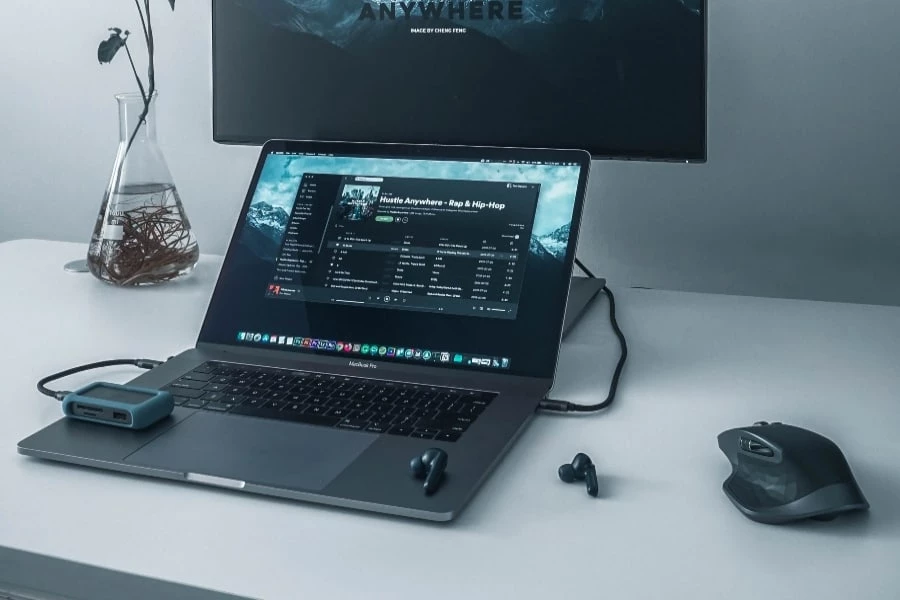
Despite its growing popularity, Dark Mode is still perceived ambiguously. Companies are confident that this mode relieves stress on the eyes, saves battery power, and helps users concentrate on work. Scientists disagree and say the perception of text on a dark background worsens, making it more difficult for users to read. In this article, we will analyze Dark Mode’s pros and cons and determine whether it is worth spending money on its development.
Dark Mode Saves Battery Power On Devices With OLED Displays
Unlike liquid crystal screens, OLED displays on gadgets completely turn off pixels to produce black. For example, if the page has a black background and light text, then the OLED display highlights pixels only for text. So it reduces battery consumption: the battery does not need to expend energy on the backlight, and it keeps the charge longer.
For example, Google compared the power consumption of the iPhone 7 with an LCD screen and the Google Pixel with an OLED display. Google Maps was opened in Dark Mode, and power consumption was measured.
A Google Pixel with an OLED display consumed almost three times less energy in Dark Mode than in light mode, while the iPhone 7 consumed 230 mA in both modes. Thus, the enabled Dark Mode on OLED displays cut power usage by 63%.
Dark Mode Is A Popular Function Of Modern Interfaces
The developers present Dark Mode as a solution to some eye problems associated with the long use of screens – eye fatigue and dryness of the sclera and cornea. Users appreciated the novelty and began to choose it at night and during the day. Users usually know how to make Mac Dark Mode but is it so useful?
Advantages Of Dark Mode
The developers claim that using the option makes working with the device in low-light conditions easier. Is this true?
The bright white light of the display creates a sharp contrast with poor lighting. Using your Mac in such conditions leads to a strain on the eyes as the lens adapts to light and darkness. In a dark room, the pupil dilates but the flow of light through the screen increases, and an excessive amount of light changes the refractive power of the lens, so an image does not focus on the retina. To counter this, the lens regulates the flow of light from the display by constantly tensing the ciliary muscles. Dark Mode lowers the contrast between external and screen light, making it easier to work with the device, and kinder on the eyes.
What’s more, a Dark Mode helps you focus when working with text. Apple claims that only desired content is highlighted, and the interface elements are darkened and do not interfere.
Dark Mode And Blue Light Emissions
Blocking blue light was presented by the developers as one of the advantages of Dark Mode. Blue light waves have more energy than other parts of the spectrum and send a signal about the time of day to the brain. Blue wavelengths influence the production of melatonin, a hormone that regulates the rhythms of sleep and wakefulness. If this decreases, it can lead to a disruption of biorhythms, but there is no reliable evidence confirming the effects of blue light.
The Effect Of Dark Mode On The Eyes
Dark Mode allows you to use your device longer before bed and in low artificial light. In natural or bright light, prolonged reading with Dark Mode causes eye fatigue, regardless of the time of day, as the text stands out less.
In addition, light text diffuses light around and easily creates a “halo effect” on a dark background: letters merge, and words seem blurred. It is more difficult for the eyes to focus, and the ciliary muscles quickly get tired, changing the curvature of the lens.
Dark Mode cannot be used for long-term reading and is not suitable for everyone, especially not recommended for people with myopia and astigmatism. Reading in darkened mode can worsen your vision due to a spasm of accommodation – tension of the muscles regulating the curvature of the lens. For those with similar vision problems, it is better to reduce the backlight’s brightness.
Effective methods will help to reduce eye tension. For example, overhead lighting casts glaring highlights. A matte film superimposed on a phone screen will help solve this. You also need to remember to keep displays at least at eye level. It is better to fix screens at the same level as the eyes or slightly lower to reduce blinking.
There is no clear answer to whether using a dark interface is good for the eyes. Its use may be convenient, but it depends on circumstances and personal preferences. Time spent working with a device is more important than the chosen mode. Each has its advantages and disadvantages depending on how a device is used.
Should I Use Dark Mode?
Dark Mode is most helpful when there is low lighting, or you do not need to read much text. It must retain enough contrast and brightness for ease of readability, but switching from pure white to pure black is probably not a good choice.
If you spend a lot of time reading from a screen, you need to change to a Dark Mode (perhaps a light gray background with black text), adjust the screen brightness, and check the surrounding lighting rather than changing colors.


